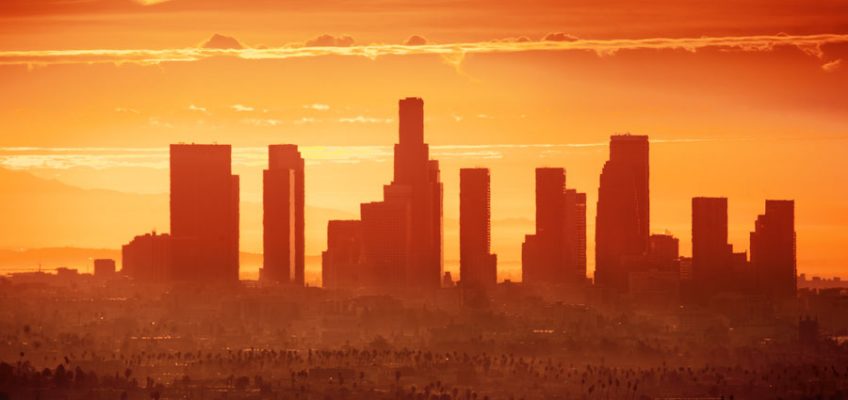LOS ANGELES, CA – During the COVID-19 pandemic, essential workers took the spotlight as they served households across the United States. However, essential workers today work in conditions that threaten their health. With the increasing frequency of hot days, essential workers can fall vulnerable to heat stress, heat strokes, dehydration, even death. And as an added burden, farmworkers endure inhaling contaminants and smoke from wildfires, and warehouse workers are exposed to air contaminants made more potent by extreme heat.
In releasing Exhausted! Workers Confront Extreme Heat and Wildfire Smoke in California, Climate Resolve places the spotlight back on essential workers and how climate change is affecting their lives.
The authors review the laws and regulations designed to protect workers – as well as the latest research on the economic, physical, and psychological impacts of working in extreme conditions.
Climate Resolve discovered profound gaps in the social systems intended to protect workers. The authors also made 18 recommendations for immediate action. These include:
Protecting both indoor and outdoor workers:
- Create new insurance products for hazard pay and unworkable conditions
- Design and build large-scale cooling projects in the built environment
- Make home a safe haven
- State agencies must coordinate their approach on extreme heat
- Cal/OSHA must be sufficiently resourced in both funds and technical support
- Improve communication on drinking-water
- Expand independent monitoring
- Fix Cal/OSHA’s communications problem
- Environmental organizations must prioritize worker health and safety
- Develop a Cal/OSHA database on heat-related workplace incidents
- Improve air quality monitoring at the workplace
- Fund organizations to assist workers
Specifically protecting outdoor workers:
- Provide clean air refuges during wildfire smoke events
- Make growers liable
Specifically protecting indoor workers:
- Prioritize adoption of the Indoor Heat Illness Prevention Standard
- Update the California Building Code to protect warehouse workers
- Update international standards to include real-time indoor temperature and humidity monitoring
- Prioritize research into worker productivity and absenteeism
“The best approach to ensuring worker health is to take the whole person into account. While it’s essential to improve conditions at the workplace, it is also vital to consider the worker’s home and community,” said David Eisenman M.D., Professor of Medicine and Public Health Director at the David Geffen School of Medicine at UCLA and UCLA Center for Public Health and Disasters. “People recover from extreme heat days at night. Workers need to be able to cool down their bodies overnight before returning to work the following day.”
In researching Exhausted! Workers Confront Extreme Heat and Wildfire Smoke in California, the authors interviewed the Warehouse Workers Resource Center and California Rural Legal Assistance, and workers themselves, who told story after story about employers who failed to help employees adapt to severe weather.
“We heard anecdotes of employers placing water far away and failing to provide adequate shade or cooling,” said Natalie Delgado of Climate Resolve. “Unfortunately, many employers have failed to comply with the law by failing to provide adequate shade or cooling.”
“Workers must have access to cool environments, water to stay hydrated, proper ventilation, and other safety measures if we want goods delivered and food to remain accessible in the United States,” said Marc Futernick M.D., Managing Editor of The Journal of Climate Change and Health.
The report was underwritten by Resilient Cities Catalyst and the Conrad N. Hilton Foundation through the California Resilience Partnership.
About Climate Resolve
Climate Resolve (www.climateresolve.org) is a 501(c)3 nonprofit organization that builds collaborations to champion equitable climate solutions. We connect communities, organizations and policymakers to address a global problem with local action. We inclusively develop practical initiatives that reduce climate pollution and prepare for climate impacts. Using our collective power to tackle climate change, we are creating a thriving California and inspiring others to act. Our purpose is a just and resilient future.


Leave a Reply